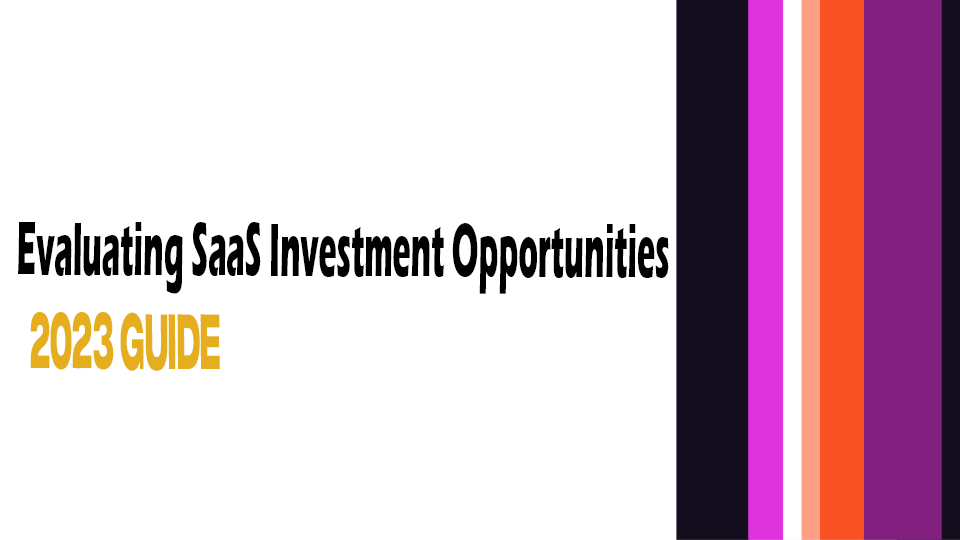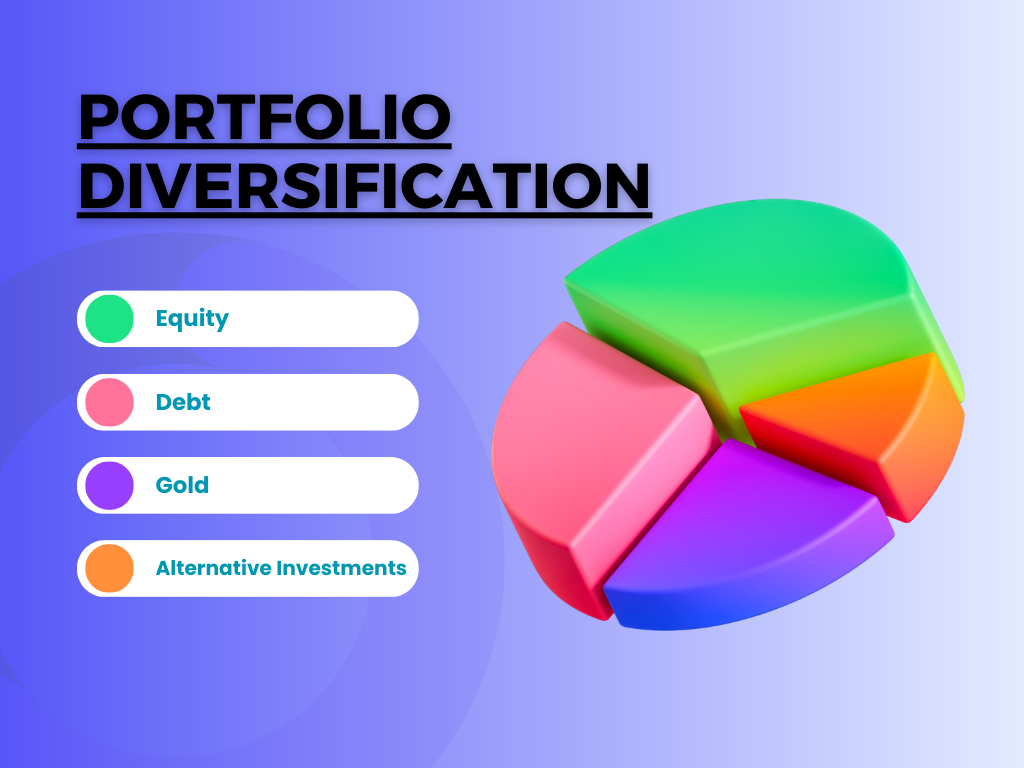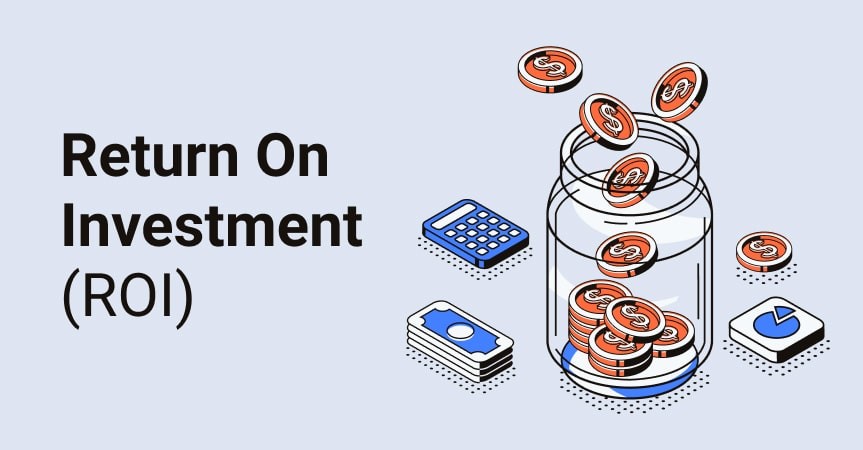Evaluating SaaS Investment Opportunities can seem like a complex maze, especially when you’re just starting out in the investment world.
Scouring financial news sites and investor forums might lead you to believe that without prior experience or insider knowledge, your chances of making successful investments are slim.
“You need experience to make profitable investments and you need profitable investments for experience.” This is simply not true.
The SaaS sector is undergoing a swift transformation, creating various chances for investors. New startups emerge every day, disrupting traditional business models and offering promising returns on investment.
The potential in SaaS investing is real.“The global SaaS market size was valued at USD 158.2 billion in 2023 and is expected to grow at a compound
The Rising Tide of SaaS Investing
As the tech sector evolves, investment in Software as a Service (SaaS) has seen an upsurge of interest. This rising tide can be attributed to several key factors within the global SaaS market.
SaaS investments are increasingly viewed as lucrative opportunities.
Famed investor Warren Buffet once said, “Risk comes from not knowing what you’re doing.” When it comes to investing in the ever-growing field of SaaS companies, understanding industry trends and growth potential becomes paramount.
Informed investment decisions hinge on recognizing certain hallmarks characteristic of successful SaaS businesses – predictable revenue streams derived from subscription models, high customer retention rates leading to recurring annual revenues, and higher profit margins compared with traditional business models. These elements combined offer an attractive proposition for investors seeking long-term success while managing their risk profile effectively.
Here’s why this trend is gaining momentum:
Growth Projections Are Impressive. The global SaaS market size, which was valued at $158.36 billion USD in 2023, is projected by Fortune Business Insights to reach $883.34 billion by 2029. This exponential growth trajectory underscores both its dynamic nature and immense scope for investors looking towards technology-focused portfolios.
This isn’t surprising when we consider how cloud-based software solutions have revolutionized accessibility across diverse sectors, driving demand upwards even amidst emerging economies. It also highlights just how integral these services have become within our digital landscape today.
Diversification Is Key To Managing Risk. Like any form of investment, putting all your eggs into one basket isn’t a wise strategy, especially given the volatile nature markets often face. That’s where diversifying across different segments within the SaaS industry could prove beneficial, reducing exposure to single source risk while still capitalizing on growing markets globally.
Bearing these considerations in mind, along with exit strategies like assessing a company’s financial stability, product differentiation, intellectual property rights, among others, helps ensure a balanced
Key Takeaway:
The SaaS sector’s rising popularity among investors is driven by its impressive growth projections, lucrative revenue streams, and high customer retention rates. However, it’s crucial to diversify investments within this industry and understand the hallmarks of successful SaaS businesses for effective risk management.
The Attractiveness of the SaaS Business Model
Investing in SaaS businesses has become increasingly attractive due to their promise of lucrative returns through recurring revenue streams. The business model is appealing due to its unique features that promise lucrative returns.
Recurring revenue streams are key.
In traditional software models, companies constantly need new customers to maintain their revenues. However, with the subscription-based approach of SaaS products, businesses can secure consistent income from existing clients while simultaneously acquiring new ones.
This predictable income not only aids financial planning but also contributes to higher profit margins by reducing customer acquisition costs – an essential factor when considering long-term success in any investment decision.
Harnessing Innovation for Competitive Advantage
Innovation plays a pivotal role in providing a competitive edge within saturated markets like the global SaaS industry. Rapid technological advancements and increasing competition necessitate constant innovation among these companies, ensuring they stay ahead of the curve.
A critical area where this comes into play is leveraging user data effectively. By smartly utilizing information about users’ needs and preferences, SaaS businesses have the potential to tailor offerings according to specific client requirements, thereby enhancing the overall experience and fostering loyalty amongst them – another important aspect contributing towards the longevity of a successful enterprise.
Sustainability through Scalability: A Key Feature
Another attractive feature inherent in this business model is sustainability, which largely owes itself to the scalability potential most cloud-based applications offer. These solutions allow rapid expansion without significant upfront investments in infrastructure, giving the ability to scale up or down depending on demand fluctuations and maintaining operational efficiency at all times.
Dive into the lucrative world of SaaS investments. With recurring revenue streams, innovative edge, and scalable solutions, it’s a promising sector for 2023. #SaaSInvestments #FinanceTrendsClick to Tweet
Navigating Your Investment Decisions in SaaS Companies
Investing in the rapidly expanding global SaaS market requires a keen understanding of crucial metrics. One such vital metric is annual recurring revenue (ARR). This measurement provides insights into the predictable income generated by a company’s subscriptions annually, with higher ARR indicating strong customer loyalty and stable revenue streams.
Another key component to consider when investing: Customer Acquisition Cost (CAC).
CAC refers to the total expenses incurred while acquiring new customers, including marketing costs and sales expenditures. A lower CAC signifies that a company efficiently acquires customers – an efficiency which often translates into higher profit margins for growing markets within cloud-based software solutions.
The Importance of Market Size and Revenue Growth
In addition to these essential metrics, it’s critical not only to understand but also appreciate the importance of both market size and the rate of revenue growth when evaluating potential investments in SaaS businesses. A large market size suggests ample opportunities for expansion; robust revenue growth signals successful business operations.
Research conducted by industry experts, such as [Source Name], offers detailed insight on how these factors contribute towards making informed investment decisions. Qualitative aspects should be evaluated before investing as well.
Does your prospective investment have unique product offerings? Does it possess a competitive benefit compared to its opponents?
Answering questions like these can help assess whether you’re considering an investment based not just on numbers but strategic positioning within this highly competitive landscape too.
Evaluating Business Models
A thorough evaluation forms another integral part of the sound decision-making process. It involves examining various facets such as pricing strategy, target audience, scalability potential among others.
High-performing businesses usually exhibit certain common traits: they possess scalable models capable of driving significant user adoption; they cater to well-defined target audiences; their pricing strategies align value delivered through their products/services.
An effective way to evaluate business model viability could involve comparing similar companies within the same sector. Not only does this offer comparative analysis, but it also aids in identifying industry trends, thereby providing deeper insight into broader market dynamics.
Key Takeaway:
When evaluating SaaS investment opportunities, focus on key metrics like ARR and CAC, appreciate the importance of market size and revenue growth rates. Also consider qualitative aspects such as unique product offerings and competitive advantages. Lastly, a thorough evaluation of business models including pricing strategy, target audience, scalability potential is crucial.
Current Trends Shaping the Future of the SaaS Industry
The global SaaS market is constantly evolving, with trends and technological advancements shaping its future. These developments not only dictate the industry’s progress but also influence investment decisions.
The Role of AI and ML Technologies
AI and ML tech are currently playing a leading role in the formation of many sectors, including Software as a Service. Many businesses have started incorporating these advanced technologies into their cloud-based software solutions to enhance user experience and increase demand.
One area with significant growth potential is predictive analytics powered by AI, which provides actionable insights to help companies make informed business model adjustments and customer acquisition strategies. Additionally, machine learning algorithms automate repetitive tasks, freeing up human resources to focus on more strategic roles within organizations.
Another major advantage of integrating AI technology is improved customer service, particularly through chatbots that provide immediate responses around the clock. This fosters higher levels of engagement, resulting in increased user loyalty and reduced support costs, making it an attractive proposition overall.
Tailoring Customer Experience through Personalization
In our current digital age, where customers have numerous options at their fingertips, delivering exceptional experiences is crucial for SaaS companies aiming for long-term success. This involves retaining existing clients over time and attracting new ones. Personalization plays a pivotal role in achieving these goals. By leveraging data analysis tools, firms gain a deep understanding of individual client needs and preferences, leading to enhanced satisfaction levels. Services can then be tailored accordingly, contributing significantly to stable recurring revenue streams and ensuring predictable returns for investors’ portfolios over the long term.
Compared to other sectors, SaaS businesses have low churn rates among satisfied clientele, even during economic downturns. This is due to the robust nature of the inherent SaaS business model, which offers high profit margins and scalability. The built-in structure and design perspective allow for rapid expansion opportunities globally across different market segments without requiring substantial upfront investments traditionally associated with conventional brick-and-mortar establishments operating in specific regions. This lack of limitations in reach and scope of operations, in contrast to virtual platforms catering to worldwide audiences without geographical boundaries, further amplifies the
Key Takeaway:
AI and ML technologies are reshaping the SaaS industry, with predictive analytics offering business model insights and automation streamlining operations. Meanwhile, personalization is key in delivering exceptional customer experiences that drive loyalty and revenue. The inherent scalability of SaaS businesses also offers vast expansion opportunities without substantial upfront investments.
Evaluating SaaS Investment Opportunities: A 2023 Guide
Unearth the secrets to evaluating SaaS investment opportunities in 2023. Dive into market trends, risks, and success strategies in this thriving sector.
Risks Associated with Investing in SaaS Startups
As an investor, it’s crucial to be aware of the potential risks associated with investing in early-stage SaaS startups. These can range from high valuations and economic downturns to competition from established players and technology-related uncertainties.
The significance of comprehending these dangers cannot be overemphasized.
One key risk stems from a startup’s reliance on innovative technologies or disruptive business models that are yet unproven. If such elements fail to gain traction or become quickly outdated due to rapid technological advancements, this could significantly impact your investment returns.
Understanding Regulatory Risks
In addition, regulatory changes pose another significant challenge for investors venturing into the global SaaS landscape. Changes in laws and regulations can affect a company’s operations as well as its profitability.
You need comprehensive knowledge about data privacy rules like GDPR if you’re considering European markets. Non-compliance may lead to hefty fines which would undoubtedly have negative effects on your return-on-investment (ROI).
Beyond compliance issues related directly to software services delivery, there are other industry-specific regulations that may apply depending on what sector(s) a particular SaaS company serves. For instance, companies in the healthcare sector must observe HIPAA regulations while financial service providers are subject to Sarbanes-Oxley. Understanding these nuances before investing is essential to mitigating potential regulatory risk exposure.
A thorough understanding of all potential pitfalls associated with early-stage investments will enable you to make more informed decisions on where to put your money. It is important to conduct research on each opportunity, considering various aspects such as market size, competitive landscape, revenue growth projections, among others, alongside possible risks, to ensure a balanced perspective. This way, you will be better positioned to navigate the complexities inherent in
Key Takeaway:
When evaluating SaaS investment opportunities, it’s not just about spotting potential unicorns. It’s also about understanding the risks – from tech uncertainties and stiff competition to regulatory changes and compliance issues. So do your homework, keep a keen eye on market trends, growth projections and sector-specific regulations for a well-rounded perspective.
Strategies for Successful Investments in SaaS Businesses
The landscape of SaaS investing is a rapidly evolving sphere, teeming with opportunities. To truly thrive and maximize returns while minimizing risks, it’s imperative to adhere to strategic investment approaches.
Dive into the business models. The first stepping stone towards successful SaaS investments involves thoroughly understanding the business models of potential companies. This includes deciphering their revenue streams such as annual recurring revenues or monthly recurring revenues and identifying how they acquire customers.
Furthermore, evaluating scalability within these businesses is crucial. High scalability often signals an ability to manage increased workload without affecting performance – a vital indicator of long-term success. McKinsey’s guide provides deeper insights on building thriving SaaS businesses through effective evaluation of business models.
Evaluating Business Models
In addition, paying attention to any unique value propositions that could give them a competitive edge in this saturated market can be beneficial. These may include innovative software applications or superior customer service practices which enhance user experience and boost retention rates among others.
Diversifying Your Investment Portfolio
Broaden your horizons by diversification:
Navigating the SaaS investment landscape? Understanding business models, evaluating scalability and diversifying your portfolio are key. #SaaSInvestment #2023GuideClick to Tweet
Building Your Exit Strategy
An exit strategy is a vital component of your investment plan in SaaS companies. This involves mapping out the conditions under which you would consider divesting from or selling your stake in the company.
Your decision to exit could be driven by several factors, such as realizing desired returns, changes within the business itself, or shifts in market trends.
As an investor once said, “An unplanned exit can lead to undesired outcomes.”
Making informed decisions about when and how to pull out of an investment requires careful planning ahead. The more adept you are at understanding key metrics like revenue growth rate and financial stability of a SaaS company, the better chances you have for securing higher profit margins upon exiting.
Evaluating Market Opportunities
A growing global SaaS market presents opportunities for increased valuation upon exiting – but this requires staying updated with industry trends and comprehending their potential impact on future demand for SaaS products.
Focusing on Financial Stability
The financial healthiness also informs your choices while formulating an effective exit strategy. Key indicators include profitability ratio, cash flow statements – all essential elements that indicate whether a business has enough fiscal strength to provide desirable returns upon disinvestment.
Differentiating Product Portfolio
Another critical factor influencing any successful exit includes product differentiation, giving a competitive edge over others – especially if it’s backed up by innovation-driven software applications standing tall amidst competition, catering efficiently towards niche markets.
Therefore, making sure before investing in any SaaS businesses that they have unique solutions helping them stand apart from the crowd increases its probability of being acquired at high valuations by larger players looking to expand their portfolio, thus leading to profitable exits for investors alike.
Key Takeaway:
An effective SaaS investment strategy hinges on a well-planned exit plan, understanding market trends, ensuring financial stability of the company, and investing in businesses with unique product offerings. Stay ahead of the game to secure higher profit margins upon exiting.
Conclusion
Evaluating SaaS investment opportunities is an exciting venture, packed with potential.
Understanding the rising tide of SaaS investing gives you a glimpse into the future of this thriving sector.
Evaluating SaaS Investment Opportunities
The attractiveness of the SaaS business model lies in its scalability and predictable revenue streams.
Navigating your investment decisions requires a keen eye on key metrics like annual recurring revenue and customer acquisition cost.
Keeping up with current trends, such as AI integration, can give you an edge over other investors.
Risks are part and parcel of any investment journey, but knowing what to look out for helps mitigate them effectively.
Strategies for successful investments often involve diversifying across different sectors within the industry or following specific trends.
An exit strategy is just as crucial – understanding market opportunities will guide your decision-making process when it’s time to step back from an investment.
If you want to learn more about this, sign up for my newsletter.


